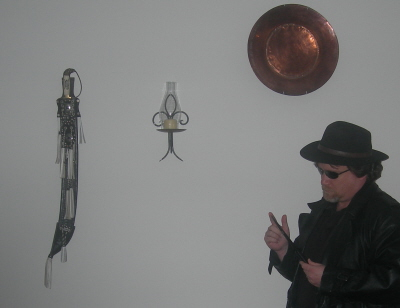|
About This Author
Come closer.
|
Carrion Luggage
Carrion Luggage
![Traveling Vulture [#2336297]
Blog header image](http://www.InkSpot.Com/main/trans.gif) ![Traveling Vulture [#2336297]
Blog header image Blog header image](/main/images/action/display/ver/1741870325/item_id/2336297.jpg)
Native to the Americas, the turkey vulture (Cathartes aura) travels widely in search of sustenance. While usually foraging alone, it relies on other individuals of its species for companionship and mutual protection. Sometimes misunderstood, sometimes feared, sometimes shunned, it nevertheless performs an important role in the ecosystem.
This scavenger bird is a marvel of efficiency. Rather than expend energy flapping its wings, it instead locates uplifting columns of air, and spirals within them in order to glide to greater heights. This behavior has been mistaken for opportunism, interpreted as if it is circling doomed terrestrial animals destined to be its next meal. In truth, the vulture takes advantage of these thermals to gain the altitude needed glide longer distances, flying not out of necessity, but for the joy of it.
It also avoids the exertion necessary to capture live prey, preferring instead to feast upon that which is already dead. In this behavior, it resembles many humans.
It is not what most of us would consider to be a pretty bird. While its habits are often off-putting, or even disgusting, to members of more fastidious species, the turkey vulture helps to keep the environment from being clogged with detritus. Hence its Latin binomial, which translates to English as "golden purifier."
I rarely know where the winds will take me next, or what I might find there. The journey is the destination.
| |
I'm sharing this two-year-old article from Inverse, not for the movie reference, but for the tech itself.
I'm going to skip past the movie part, actually. For one thing, science fiction doesn't "predict;" it, at best, speculates or extrapolates. The original Star Trek communicators, for example, didn't predict flip phones; flip phones were inspired by communicators.
For another thing, that was hardly the first SF creation to consider mind-recording technology.
And finally, full disclosure, I never saw the movie (Brainstorm) and doubt I ever will.
Four decades later, with the rise of brain-computer interfaces (or BCIs) melding the mind with machines, we may be closer to making thoughts tangible, if not to others but to devices like prosthetic limbs and speech synthesizers.
Which is a noble goal and all, but let's stop for a moment and consider the direction other technology has taken. Your computer or phone, for instance, tracks your every move, tap, click, and keystroke. I'm not paranoid enough to say "you're being watched at all times," but the potential is there, and you very well might be.
I've long said that as soon as we develop a technology that lets us share thoughts directly (which itself would be a nightmare scenario), someone will infest it with advertisements.
The primary aim of BCIs is to assist individuals with disabilities, such as paralysis, by enabling them to control prosthetic limbs, communication devices, or wheelchairs using their brain signals. Much research and innovation has gone into offering a means of communication for individuals with severe motor impairments, such as those with locked-in syndrome, allowing them to express thoughts and needs.
And, like I said, that's great. It's the inevitable follow-on that delves into dystopia. If you have technology that lets you convert brain states into action, it's not all that far off from being able to induce the brain states that you want, eliminating all that pesky rebellion in the people you want to control. Not to mention how easy it would be to zap a brain through an electrode.
That’s the extent of BCIs at the moment. We’re not anywhere close to recording whole memories or sensations — let alone afterlife experiences — nor conveying them telepathically through a headset.
The "afterlife experiences" thing, if you don't read the article, is a reference to a major plot point in the movie, one which I say takes it from SF to fantasy.
And sure, we may not be close now, but research has a way of eventually getting results. And that's the true power of science fiction: not to predict, but to warn. You get to talk about the ethical implications of something before it becomes reality. That has been the case with SF from its very beginning.
It's kind of like how horror movies teach us things like "never split up" and "don't dig up that 4,000-year-old corpse." Only with a slightly higher threshold for realism.
It's unlikely that this will reach that point in my lifetime, though further advances have been made even in the two years since this article came out. But, you know, some people think we're already there. You can spot them because they're wearing the classic paranoid-fashion accessory, tinfoil hats. Those don't work, by the way. What you need are implanted electrodes. |
© Copyright 2025 Waltz Invictus (UN: cathartes02 at Writing.Com). All rights reserved.
Waltz Invictus has granted InkSpot.Com, its affiliates and its syndicates non-exclusive rights to display this work.
|


![Traveling Vulture [#2336297]
Blog header image Blog header image](/main/images/action/display/ver/1741870325/item_id/2336297.jpg)